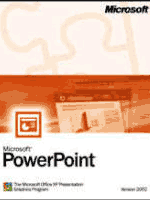PowerPoints

Status
IntroToMuseumSecurity.pptx.zip
Museum EmergencyPlanning.pptx.zip
Cultural Property Fire ProtectionREV.pptx.zip
Pending Coming Soon
Pending coming Soon
Pending Coming Soon
Pending Coming Soon
Making the Most of Security Dollar.ppt.zip
Why Mus Sec is Different.ppt.zip
Why PowerPoints? Our members speak on a variety of topics to a number of museum groups each year. We have recently asked them to prepare PowerPoint slides for their presentation and share them with colleagues.
The committee has also begin to prepare a series of PowerPoint presentations on several aspects of museum security that will form the basis of seminars we will present to museums on a regional basis. As we add PowerPoint presentations we will post them here, so come back often to see if more have been posted.
If you would like to prepare a PowerPoint presentation on a security related subject, call the Committee Chair (See “Contact Us” page) for details. Please don’t begin to prepare something until you speak with us as we have a graphics style that all PowerPoints must follow and all content must be approved by the committee to make sure it serves the wide range of museums this committee serves (large, small, traditional museum, historic site, house museum, art museum, history museum, etc.). A script must accompany the slides. Graphics must not have been “borrowed” from others. Use only public domain or copyright free artwork and images. Transitions should be crisp and clean. Refrain from using audio and video within the PowerPoint presentation as well as sound effects or other media to assure that the slides translate cleanly to Macintosh and other formats. Presentations prepared in Keynote for Mac must be translated to PowerPoint.
You retain copyright to your slides but assign rights to us for committee use,
Topics under development include the following:
Topic
Introduction to Museum Security
Threats Museums Face
Emergency Planning for the Museum
Museum Standards and Guidelines
Physical Security for Museums
Fire Prevention and Protection
Conducting A Fire Patrol
Conducting A Security Patrol
Museum Alarm Systems
The Security Policy Manual
Protecting the House Museum
Protecting the Museum on a Shoestring
Intro to Off-Site Museum Storage
Standards
Making The Most of Your
Security Dollar
Leadership and Supervision
Why Museum Security is Different: Making
the Transition
Template for Your PowerPoint

About the Template
Our goal is to develop a set of PowerPoint presentations that can be used as a “set” that enable a volunteer from a city or a regional museum to present a prepared program on museum security to employees of museums in that region. The program will address broad security concepts and practices and will target smaller museums without a security professional in charge or a security professional on staff who may be new to museum security as a specialty.
For this to work, all of the slides in the set must match visually and every presenter in every region must give accurate “approved” advice, remain on track and on topic, and provide advice that is useful to a range of museum types and sizes. To facilitate this we selected an attractive template format as our graphics standard and are tying to build presentations that all work together as one larger program. We ask all volunteers submitting PowerPoints to use the template and stick to the graphic style by retraining the font and colors.
Each slide should convey one thought or point. Developers of PowerPoints should first outline their presentation in a bulleted list for the Committee to approve or comment upon. By getting the outline approved by the Committee’s project Chair who will help with the development so that it meets the needs of the broadest audience, we will end up with a complete program which can be presented to every audience. Each bullet point would be a slide topic and each sub-bullet would be a sub-topic of that slide. The script for that slide should be included in the script margin (see the template). We prefer that slides not use graphics. The committee will add the graphics to assure that no copyright infringement occurs even accidentally and that images meet the needs of the program beneficiaries. The committee buys photos from an online source and must control this task or risk criticism or even prosecution for infringement. Let us know if you have photos or graphics that you personally own that you want to use. We will consider this when your graphics are specifically geared to the presentation. Get permission before photographing people, even your employees, for use in your photos.
Where security topics are expressed in PowerPoint slides, the points or messages of the slides must be “Guidelines Compliant” with regard to the Suggested Practices for Museum Security. This means that the policy you promote or explain in your slide must be the policy presented in the Suggested Practices for Museum Security document which is the de facto “right answer” or “right solution” for that specific problem. Each PowerPoint program should address one broad security or protection related topic and al of your slides and script should fit comfortably within a 20 minute time period of time. This leaves ten minutes at the end for discussion and questions.
The last slide may be your credit slide where you take a bow. Prepare one slide that says: This PowerPoint prepared by Your Name, Your Title, Your Institution or Company, and Your Address. No additional information should be provided.
Slides must be completely free of commercial advertising or promotion.
The Committee will provide a copyright slide and committee logo or information.
Please avoid “getting creative” with video, sound effects, etc. The final product must “play” on all computers and be able to be translated from the version of PowerPoint you used (Windows or Mac) to a universal standard. Not every presenter uses the same operating system so avoiding video and Flash avoids the issue of which video format to use, etc. Tasteful simplicity assures that in the future we can use this program on every computer and even on iPads and whatever device the future of technology has in store.
NOTICE
The PowerPoints below are to be considered drafts. During May through July, 2011 the committee will be reviewing and revising all of them. In some instances content will be added or modified. In other cases graphics will be added. The PowerPoints are included below for the use of the committee. Please feel free to use them but don’t add them to your permanent training library. Come back in August 2011 and get the free finished programs.

Can’t Open .pptx Files? Older versions of Powerpoint may not be able to open .pptx files created with Powerpoint 2007 or greater. You need to go to the Microsoft site and download the latest compatibility pack to update your older versions of Microsoft Office. You probably can’t open some Word files, either and this free update is for you. Mac users using later versions of Keynote will be able to open, and if necessary convert, these newer files. So should Open Office and other freeware programs.
We understand that some of you may be using ancient versions of software or versions that for some reason you can’t update. If your museum has an IT manager, bother him. Or ask a co-worker with a newer version of Powerpoint to try for you then convert the files to .ppt. But if you simply can’t download the compatibility pack or none is available for your version of Word for DOS 3.0 (that’s a joke), or you have no one else to ask for help, contact the Webmaster and we will try to help.
Don’t call the first time you fail to open the software. Try again before calling. This issue affects very few users and so far no one has been unable to get the files to open--but a few have failed to try hard enough.
Use Navigation menu at top of page or go HOME from here.